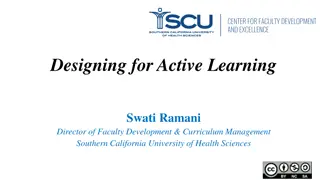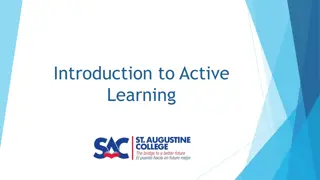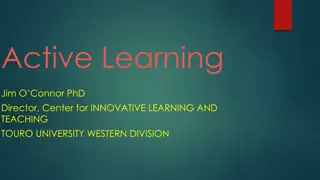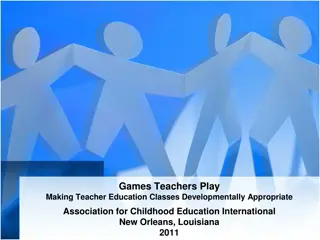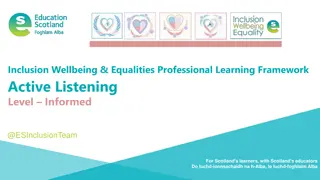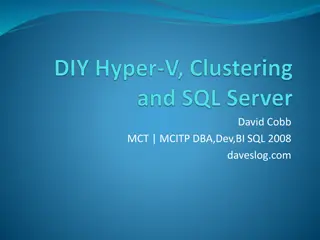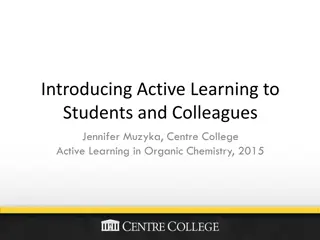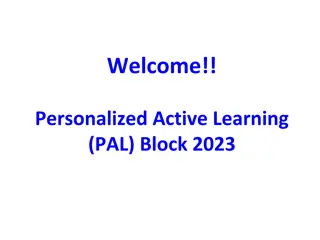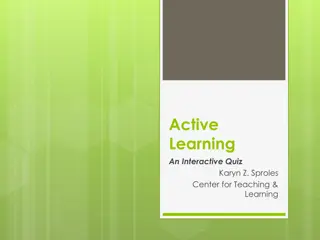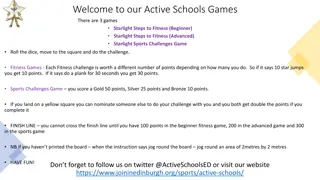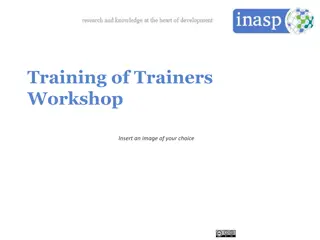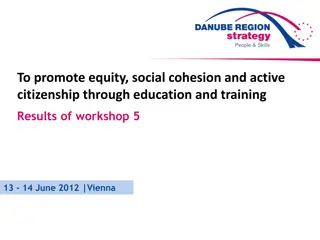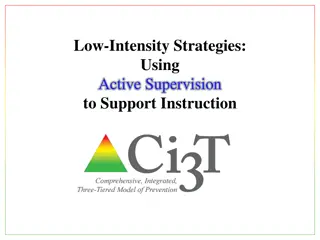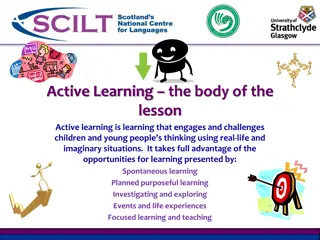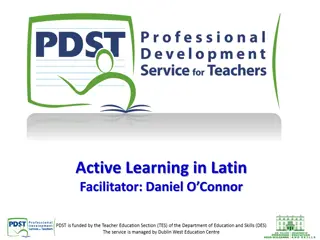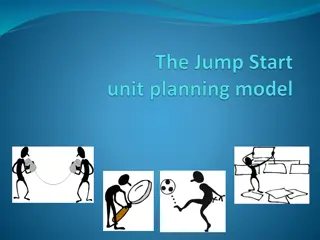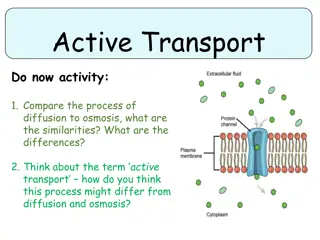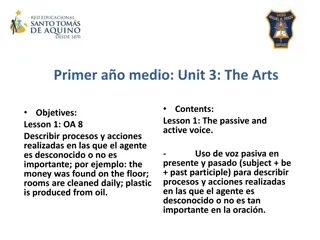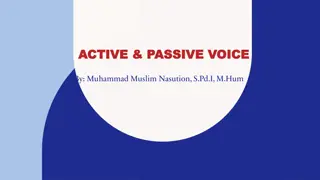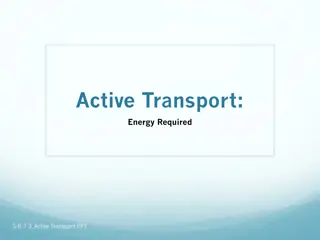Understanding Active Learning in Education
Engage students in the learning process through activities and discussions rather than passive listening. Explore the effectiveness of active learning techniques in improving student performance across various disciplines. Discover insights on adult learning styles, discussion-based courses, and the neurological aspects of learning. Embrace a student-centered approach to enhance learning outcomes in educational settings.
Download Presentation

Please find below an Image/Link to download the presentation.
The content on the website is provided AS IS for your information and personal use only. It may not be sold, licensed, or shared on other websites without obtaining consent from the author. Download presentation by click this link. If you encounter any issues during the download, it is possible that the publisher has removed the file from their server.
E N D
Presentation Transcript
Hi, my name is Tracy Dougher and I am the Division Head for Agricultural Education. I am also a Professor of Horticulture. I have appointments in two departments within the College of Ag. I am engaged with the Center for Faculty Excellence as a member of the Teaching Excellence Action Committee and the CFE Advisory Board. I have completely flipped my Miracle Growing class. I play the banjo and my husband plays the bagpipes. I have two wonderful children who are involved with scouting, the oldest is an Eagle Scout and the younger is working on her Bronze Award in Venture Scouting. I am the oldest of nine children, so I can be very bossy sometimes. I did not learn teaching from being bossy.
What is Active Learning? Active learning engages students in the process of learning through activities and/or discussion in class, as opposed to passively listening to an expert. It emphasizes higher- order thinking and often involves group work. As opposed to continuous exposition by the teacher. What you are mostly NOT doing right now. Freeman et al. (2014) Active Learning Increases Student Performance in Science, Engineering, and Mathematics. PNAS 111:8410
1 6 11 16 21 2 7 12 17 22 3 8 13 18 23 4 9 14 19 24 5 10 15 20 25
1 6 11 16 21 2 7 12 17 22 3 8 13 18 23 4 9 14 19 24 5 10 15 20 25
1) The Learning Styles paper by Pashler et al. notes that adults, if asked, will express preferences for how information is presented to them, A. and evidence is abundant that adults learn best in their preferred learning style. B. but evidence is lacking that adults learn better when taught in their preferred style and in some cases the evidence runs contradictory to this hypothesis. C. and evidence is scant but emerging that adults learn best when taught in their learning style.
2) Yamane (2006) concludes that discussion-based courses are predicated on students A. reading and thinking about the course material prior to attending class. B. being exposed to the material for the first time at the beginning of class. C. testing themselves thoroughly on the material prior to attending class.
3) Neurologically, mathematicians are A. right brained. B. left brained. C. firing neurons in both hemispheres of the brains.
4) Failure rates under traditional lecturing are ______ over the rates observed under active learning. A. the same B. 25% decreased C. 55% increased
5) If a student comes to you and says I study lots, but I don t get it , you could suggest they A. only go to lecture B. only read the textbook C. try one or several of the techniques suggested by Dunlosky et al., such as imagery for text, distributed practice, and elaborative interrogation.
6) Dr. Dougher plays the A. piano B. harmonica C. washtub bass D. bagpipes E. banjo
1) Pashler et al. (2009) Learning Styles: Concepts and Evidence. Psychological Science in the Public Interest. 9(3):105 2) Yamane (2006) Course Preparation Assignments: A Strategy for Creating Discussion-Based Courses. Teaching Sociology 34:236 3) Organisation for Economic Co-operation and Development (2002) Understanding the Brain: Towards a New Learning Science. http://www.oecd-ilibrary.org/education/understanding-the- brain_9789264174986-en 4) Freeman et al. (2014) Active Learning Increases Student Performance in Science, Engineering, and Mathematics. PNAS 111(23):8410. 5) Dunlosky et al. (2013) Improving Students Learning with Effective Learning Techniques: Promising Directions From Cognitive and Educational Psychology. Psychological Science in the Public Interest. 14(1):4


